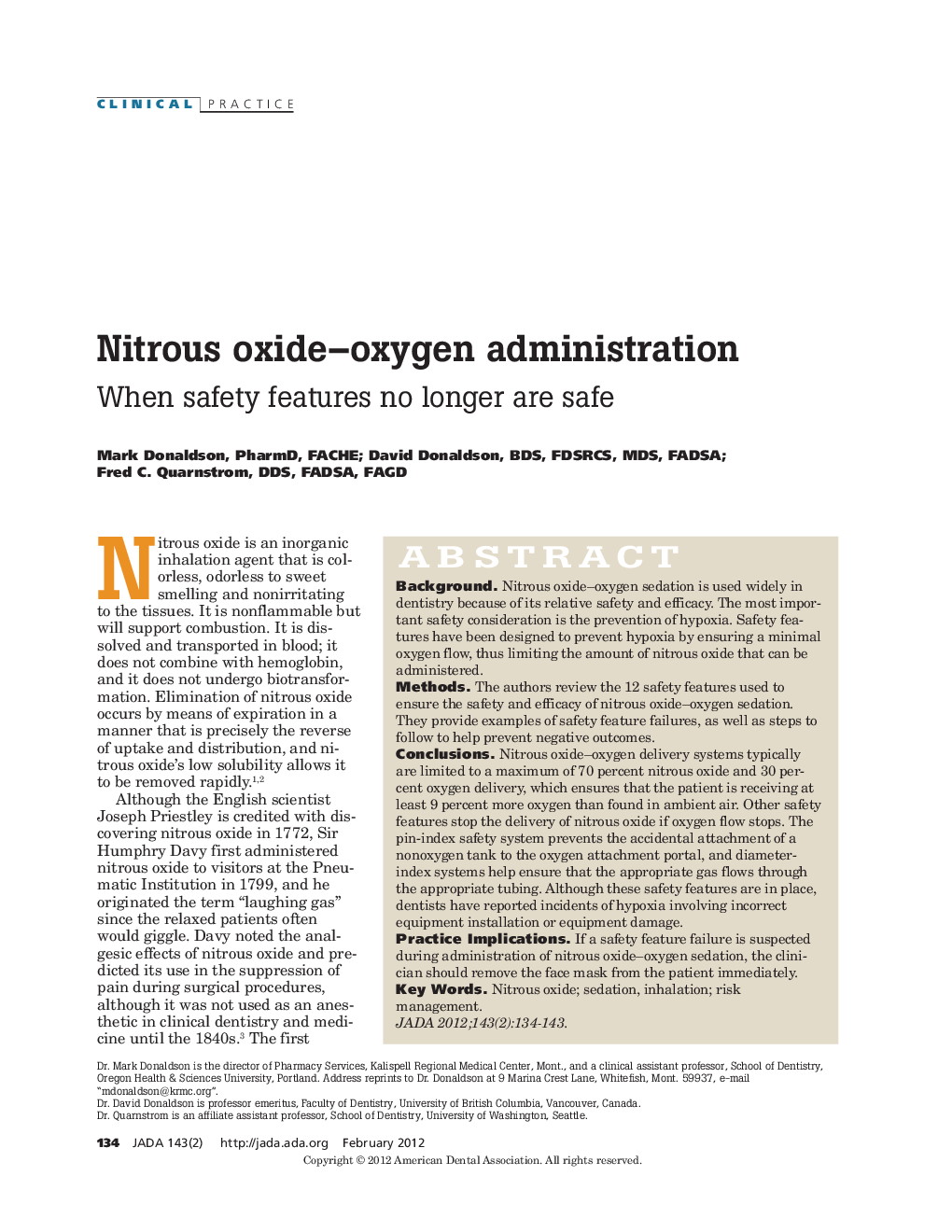| Article ID | Journal | Published Year | Pages | File Type |
|---|---|---|---|---|
| 3137951 | The Journal of the American Dental Association | 2012 | 10 Pages |
ABSTRACTBackgroundNitrous oxide–oxygen sedation is used widely in dentistry because of its relative safety and efficacy. The most important safety consideration is the prevention of hypoxia. Safety features have been designed to prevent hypoxia by ensuring a minimal oxygen flow, thus limiting the amount of nitrous oxide that can be administered.MethodsThe authors review the 12 safety features used to ensure the safety and efficacy of nitrous oxide–oxygen sedation. They provide examples of safety feature failures, as well as steps to follow to help prevent negative outcomes.ConclusionsNitrous oxide–oxygen delivery systems typically are limited to a maximum of 70 percent nitrous oxide and 30 percent oxygen delivery, which ensures that the patient is receiving at least 9 percent more oxygen than found in ambient air. Other safety features stop the delivery of nitrous oxide if oxygen flow stops. The pin-index safety system prevents the accidental attachment of a nonoxygen tank to the oxygen attachment portal, and diameter-index systems help ensure that the appropriate gas flows through the appropriate tubing. Although these safety features are in place, dentists have reported incidents of hypoxia involving incorrect equipment installation or equipment damage.Practice ImplicationsIf a safety feature failure is suspected during administration of nitrous oxide–oxygen sedation, the clinician should remove the face mask from the patient immediately.
